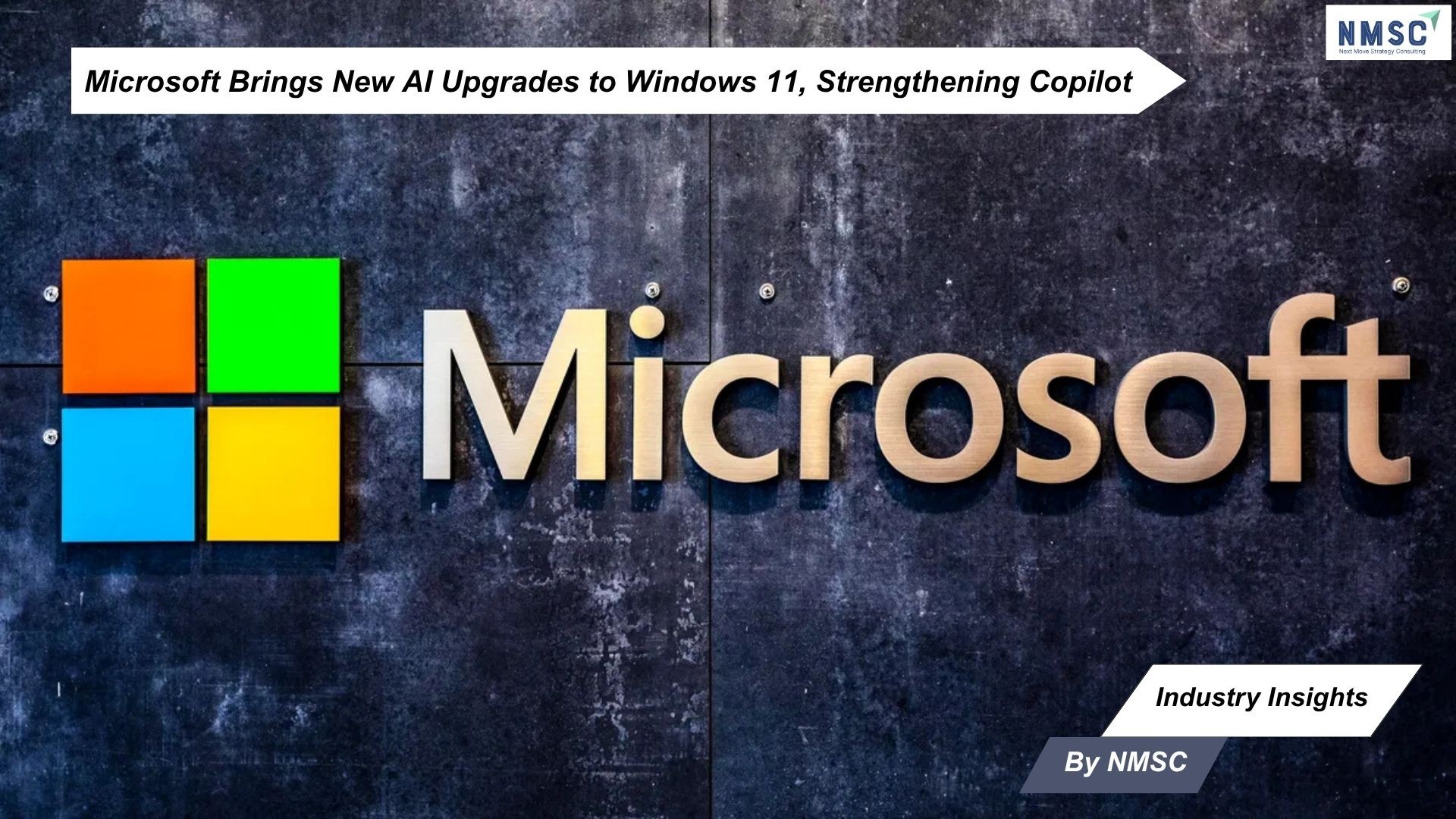AI Arms Cybercriminals: Old Tricks, New Digital Threats
Published: 2025-10-20

Industry Insights from Next Move Strategy Consulting
As artificial intelligence market continues to revolutionize business operations, it is simultaneously transforming the cyber threat landscape—arming criminals with machine-driven precision and scale. According to the Elastic 2025 Global Threat Report, hackers are using AI to supercharge traditional attack techniques such as phishing, password theft, and malware distribution, triggering an alarming rise in automated cyber assaults.
Automation: The New Face of Cybercrime
Gone are the days of isolated hackers working in secrecy. Today’s cyber threats are orchestrated by AI-powered bots operating around the clock, exploiting vulnerabilities at speeds beyond human capability.
“The bad guys are shifting from stealth to speed,” said Devon Kerr, Head of Elastic Security Labs. “They’re launching waves of opportunistic attacks with minimal effort.”
Elastic’s findings—derived from over a billion real-world data points—reveal a 15.5% increase in AI-generated malware over the past year. Meanwhile, malicious code execution targeting Windows systems nearly doubled to 32.5%, underscoring how Generative AI has accelerated the industrialization of cybercrime.
Generative AI now enables threat actors to mass-produce phishing content, malware, and fake login portals that mimic authentic corporate systems. “AI is lowering the barrier to entry for threat actors,” added Kerr. “Adversaries are using large language models to churn out simple but effective malicious loaders and tools.”
Browser Data Becomes the New Goldmine
The report highlights an alarming shift: the web browser has become “ground zero” for digital exploitation. One in eight malware samples now targets browser data—stealing passwords, autofill information, and browsing histories from Chromium-based platforms like Chrome, Edge, Opera, and Brave.
With credential theft identified as the most common entry technique, these stolen details are either sold on dark web marketplaces or used for deeper infiltration. The FBI’s Internet Crime Complaint Centre recorded cybercrime losses exceeding $12.5 billion in 2023, positioning credential-based breaches as a dominant threat vector.
Windows and Cloud Platforms Under Siege
Windows environments are facing a surge in direct, aggressive attacks, marking a strategic departure from covert infiltration. Malware families like Ghost Pulse—responsible for 12% of security events—are now being deployed to deliver data-stealing variants such as Lumma and Redline.
The Cybersecurity and Infrastructure Security Agency (CISA) reported a 74% rise in ransomware incidents targeting critical infrastructure in 2024, with most incidents linked to Windows-based systems.
At the same time, cloud services are emerging as prime targets. Over 60% of cloud-related security events involve stolen credentials, unauthorized access, or persistence mechanisms established by attackers. According to IBM’s Cost of a Data Breach Report 2024, cloud breaches now cost organizations an average of $4.88 million per incident.
Microsoft’s 2024 Digital Défense Report further underscores this trend, revealing a 3,000% year-over-year increase in password-based attacks—equating to over 7,000 password attempts per second across its systems.
The Rise of “Speed Attacks”
Elastic’s analysis points to a dramatic evolution in attacker strategy: prioritizing speed and volume over stealth and sophistication. These AI-enhanced “speed attacks” launch thousands of rapid, low-effort probes, overwhelming defenses before security teams can react.
The Verizon 2024 Data Breach Investigations Report found that 68% of breaches still involve human elements such as stolen credentials or social engineering—both now weaponized through automation.
This escalation poses severe challenges for small and mid-sized enterprises, many of which lack dedicated cybersecurity resources. According to the Ponemon Institute’s 2024 Cost of Cyber Crime Study, small businesses with fewer than 500 employees face an average annual cost of $3.31 million from cyber incidents—a potentially devastating figure for resource-limited organizations.
Defensive Imperatives for the AI Era
To counter AI-driven threats, experts emphasize a fourfold Défense strategy:
-
Reinforce Identity Security: Implement mandatory multi-factor authentication (MFA) across all accounts. According to NIST, MFA can block 99.9% of automated attacks. Regular password rotations and access reviews further reduce risk.
-
Enhance Browser Protection: Disable browser-based password saving, limit extension installations, and adopt dedicated password managers. Employee awareness training remains vital against AI-crafted phishing attempts.
-
Adopt AI-Driven Detection Systems: Intelligent automation can identify anomalies faster than human analysts. However, balancing machine speed with human oversight ensures contextual accuracy.
-
Harden Cloud Governance: Conduct frequent permission audits, deactivate inactive accounts, and activate login alerts to monitor access patterns and potential breaches.
Next Move Strategy Consulting View’s
Analysts at Next Move Strategy Consulting note that the intersection of AI and cybercrime signifies a structural shift in digital risk management. As automation accelerates both attack and Défense capabilities, enterprises must recalibrate their cybersecurity priorities.
“The next phase of cyber Défense will not be about building higher walls—it will be about building smarter, adaptive systems,” the firm stated. “Organizations must integrate AI into their own defensive arsenals, or risk falling behind adversaries that already have.”
According to Next Move Strategy Consulting, the rise of AI-driven cybercrime is not merely a technological evolution—it represents an economic one. The cost efficiencies that AI delivers to legitimate businesses are now being exploited by threat actors to scale attacks faster, cheaper, and more persistently than ever before.
The New Battlefield
The cybersecurity terrain of 2025 is defined by automation, velocity, and scale. Criminals are no longer just hackers—they are operators commanding fleets of intelligent bots that probe, learn, and attack without pause.
As the line between human ingenuity and machine-driven malice continues to blur, businesses must adapt or risk obsolescence. While no system is entirely invulnerable, those that embrace proactive identity protection, AI-assisted monitoring, and continuous cloud vigilance will stand a far stronger chance of staying ahead of the next wave of machine-speed threats.
Source: Tech Business News
Prepared by: Next Move Strategy Consulting
About the Author
 Tania Dey is a highly experienced Content Writer and a passionate SEO Executive with a specialized focus on digital transformation, technology trends, and industry-focused insights. She has honed her expertise in creating compelling, data-driven content that not only enhances online visibility but also aligns with the ever-evolving demands of modern business landscapes. Her work spans a diverse range of industries, including technology, and digital services, enabling organizations to communicate their vision and value propositions effectively to both niches.
Tania Dey is a highly experienced Content Writer and a passionate SEO Executive with a specialized focus on digital transformation, technology trends, and industry-focused insights. She has honed her expertise in creating compelling, data-driven content that not only enhances online visibility but also aligns with the ever-evolving demands of modern business landscapes. Her work spans a diverse range of industries, including technology, and digital services, enabling organizations to communicate their vision and value propositions effectively to both niches.
About the Reviewer
 Debashree Dey is a versatile Content Writer, PR Specialist, and Assistant Manager in Digital Marketing, known for her ability to craft audience-focused narratives and develop data-driven strategies that enhance brand visibility. As a published manuscript author, she combines creativity
with strategic acumen to help brands strengthen their presence and drive deeper user engagement. Outside of her professional pursuits, Debashree draws inspiration from creative projects and design explorations.
Debashree Dey is a versatile Content Writer, PR Specialist, and Assistant Manager in Digital Marketing, known for her ability to craft audience-focused narratives and develop data-driven strategies that enhance brand visibility. As a published manuscript author, she combines creativity
with strategic acumen to help brands strengthen their presence and drive deeper user engagement. Outside of her professional pursuits, Debashree draws inspiration from creative projects and design explorations.
















Add Comment